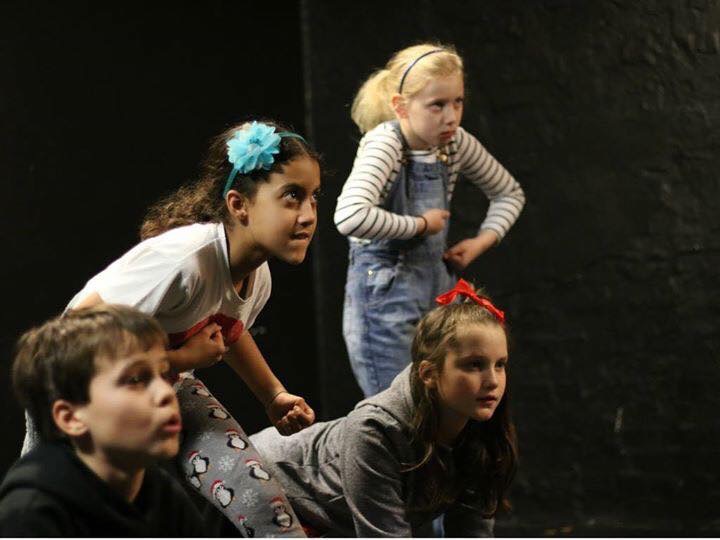There is magic in a child’s imagination that is often lost on the way to adulthood. Grown up writers and artists have to work hard for the fantastical juxtapositions and creations that children can zing up.
Sure, adults have a sophistication in craft and language and history and ideas but children can conjure up talking carpets because - why not?
That an adult steeped in a language of theatre might see a face in a carpet, with a spotlight and moving lips and think - Samuel Beckett’s Not I** - that remains the thoughts an adult audience might bring.
One of the brilliant qualities of immersive theatre* is the more immediate and obvious connection between the viewer and the actor and the space.
Much art is not complete without a viewer or a reader or a listener and each person completes a piece of art in a unique manner. Universal but specific.
One reason, I view, the continuing appeal of live performance whether music gigs or theatre is that aspect of live connection.
The Droves is therefore exceptional and unique on several levels.
It has a level of immersion in common with some of the best theatre of its type but its guided by the impulse of children. The experience lacks the artifice of adults.
I dislike the currently overused notion of authenticity and the children’s impulses and imagination have had adult input, but at its core is the child.
Yet not only is the children’s vision at the heart of the piece, but child performers take you through the Droves journey.
Now an adult can perform a child’s role, and perhaps a man can touch on some of the aspects of being a woman; but is that mostly unsatisfactory?
In the same way the animation series Pablo has ASD performers woven through its narratives, there is a layer deeply satisfying and genuine being led by a child.
On the surface the Droves is a story about repopulating a race of exiled children who when grown are mind wiped and ejected from their community. To me, in its moon heart, it speaks to lost childhood, the myth and fables of fairy tales and growing up, the little monsters we fear - the dreams we hold dear - the parts of childhood we have to let go though we may want to grip them with all our strength
The childhood threads of imagination that are mind wiped as we grow, that we can never recall but will forever miss like a part of our shadow we never knew we had.
It’s a shame Droves is on for such a short run.
If you’d like to be immersed in theatre by children go and see.
The Droves is an immersive theatre show, designed by kids, for adults.
You’re invited into a secret community of children living deep beneath a derelict carpet factory. For decades they’ve hidden from adults, growing strange in the darkness – but now they’re asking you in… Unsettling dilemmas, mushroom forests and at least one gorilla await you at the door.
Full disclosure, I chair theatre company, Coney which is behind the Droves.
It’s unique and ground breaking and only has a short run. But with many time slots. The Droves will be at COLAB Factory from the Sat 17 – Sun 25 February 2018 from 6:30pm (Matinees from 1:30pm). BOOK TICKETS HERE
More thoughts: My Financial Times opinion article on the importance of long-term questions to management teams and Environment, Social and Governance capital.
How to live a life, well lived. Thoughts from a dying man.
If you'd like to feel inspired by commencement addresses and life lessons try: Neil Gaiman on making wonderful, fabulous, brilliant mistakes; or Nassim Taleb's commencement address; or JK Rowling on the benefits of failure. Or Charlie Munger on always inverting; Sheryl Sandberg on grief, resilience and gratitude or investor Ray Dalio on on Principles.
Cross fertilise. Read about the autistic mind here.
*In immersive theatre (H/T Space), the audience are not merely passive bystanders. They are part of the story, however small their role may be, and they are in the middle of the action.
In an immersive theatre production, the audience in some way plays a role, whether that is the role of witness or the role of an actual character. They may be allowed to roam and explore the performance space as the performance happens around them, allowing them to decide what they see and what they skip. They might be herded from room to room so they see the key scenes. They might even be invited to become a more active part of the performance. The lines between performer and audience and between performance and life are blurred. The audience is placed within the environment of the story and therefore play witness front and centre to the events without the distancing factor of a proscenium.
** A Youtube of a BBC two version of Not I and Lisa Dwan on the role.



